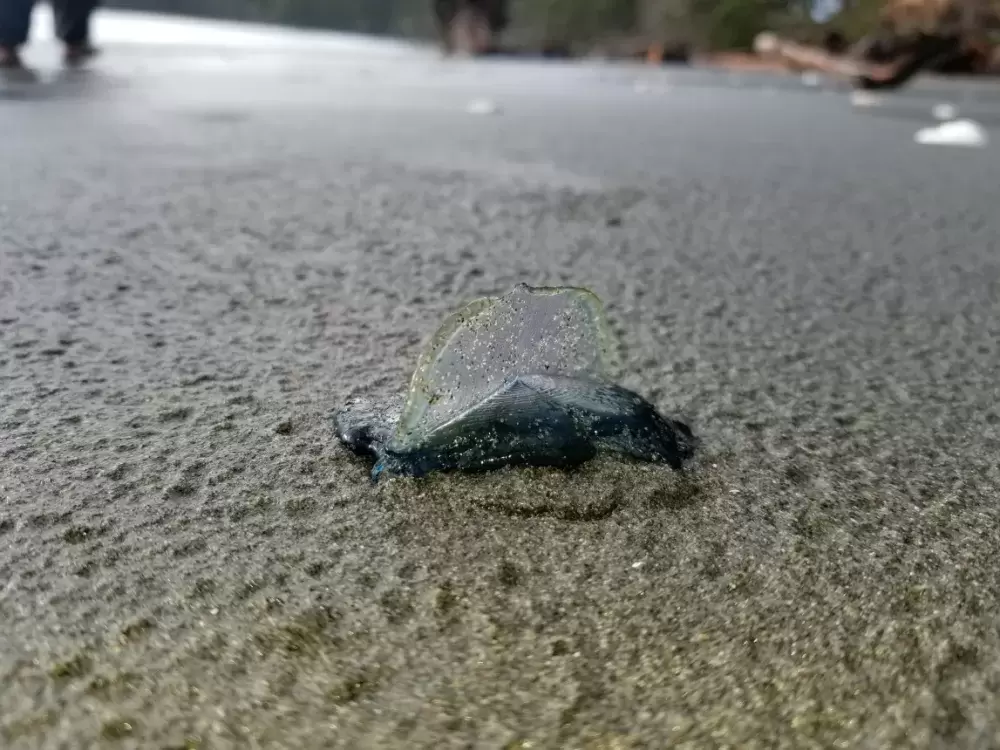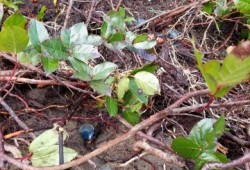The mid-January storm that wreaked havoc on the west coast of Vancouver Island also caused an unusual phenomenon on at least one of Flores Island’s remote beaches near Ahousaht.
On a family walk to the beach a day after a strong windstorm, June Titian noticed that the beach was littered with sparkling, blue glass-like objects.
“They were so pretty, they looked like blue glass but when I went to pick one up it was like, eww…they were gooey, like jelly fish,” she said.
According to Titian, the creatures washed up on the beach in clusters. They would walk through a hundred or so then there would be none for 30 or 40 feet before they came upon the next cluster. Some of the gelatinous creatures were tossed up above the high tide mark and were hanging off the bushes above the shoreline.
A life-long resident of Ahousaht, Titian had never seen these things before and posted photos of the creatures to social media. Local fishermen recalled seeing the same thing floating on the ocean during a fishing trip far off-shore.
The creature was subsequently identified as Velella velella, a relative of the jellyfish.
Also known as sea rafts, purple sails or simply velella, the soft jelly-like creatures live in large pods, adrift, far off shore. Their bodies are tinted a beautiful shade of blue and they have a clear, rigid fin that serves as a sail that is their only means of propulsion through the ocean.
They live on top of the water, feeding on plankton.
A full-sized velella is about seven centimetres, or three inches long. Its clear fin protrudes out of the water.
It is because of that fin that hundreds, if not thousands of velella can get thrown ashore in major windstorms. Once beached, the velella dries up and dies.
Velella strandings usually occur in spring windstorms in coastal British Columbia down to the beaches of California.
Titian says she returned to the beach days later and the tides had washed the beach clean. The only sign of the stranding were the few velella that had begun shriveling up on the branches of bushes along the beach. It is said that a couple of days after mass strandings of velella they begin to decompose, which makes for a smelly beach. Eventually, they disintegrate completely, if they haven’t been washed back into the ocean, like they did at Flores Island.









